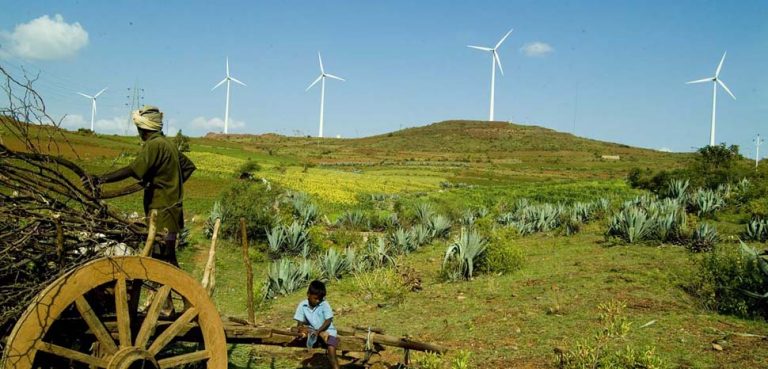Alexandria Ocasio-Cortez has recently presented Congress and American voters her first draft of the ‘Green New Deal.’ It’s a plan to challenge, or eliminate, social, economic and environmental imbalances in the United States. Apart from a number of social initiatives (some of which are interesting), the Democrats’ new firebrand wants to cut carbon dioxide (CO2) emissions such as to achieve complete ‘de-carbonization’ by 2050. This, she suggests, will be achieved by producing all of America’s energy needs from renewable sources.
Alexandria Ocasio-Cortez, appears to have revitalized the Democratic party, capturing the imagination of the younger and ‘politically-correct’ and CO2 indoctrinated generations, so-called millennials. However, the green new deal would eliminate an activity that millennials have enjoyed and exploited more than any other generation: air travel.
Electric-power airplanes do exist. Yes, at the experimental stage. Airbus and Boeing are working on prototypes and perhaps, by 2030, Airbus will unveil a version of its E-Fan electric and hybrid-electric powered regional plane, good for a range of some 400-500 km (about 240-280 miles). But, anyone wanting to travel greater distances, across the Atlantic or the Pacific, will still have to rely on good old kerosene (or perhaps another fuel) powered jets.
Indeed, the Green New Deal proposes to eliminate commercial air travel – or at least it proposes to limit it to a select few by making it extremely expensive through regulatory costs and ‘carbon taxes’ (or similar instruments).
The irony is that few industries have done more to reduce carbon dioxide emissions quite like those involved in commercial and military aviation. That would include aircraft manufacturers like Boeing and Airbus, engine makers like Pratt & Whitney or General Electric and the airlines themselves. It’s not that these industries are more environmentally conscious, or ‘greener’ than the others. It’s because, they have long been driven by the need to reduce fuel consumption and improve efficiency. Less fuel burned per mile means longer distance non-stop flights (airplanes burn much less at operating altitude than they do landing and taking off.) Airlines want significant cost savings on every flight. Military air forces want the advantages of being able to deploy aircraft more strategically – and at lower cost.
Yet, the media has painted commercial aviation in nasty colors. Who can forget the lamentations of one George Monbiot, comparing air travelers to killers? And what of this gem from Liberation in France?
Perhaps, it’s time to reconsider the wonder of aviation, its contribution to society and, yes, its role in developing new ‘green’ technology.
Commercial aviation will continue to develop, but there are many challenges ahead. And one of the most important is to rekindle people’s fascination with flight.
The 19th century English poet laureate, Alfred Lord Tennyson, appears to have prophesized commercial and military aviation in Locksley Hall, which he wrote in 1835:
“For I dipt into the future, far as human eye could see, Saw the Vision of the world, and all the wonder that would be; Saw the heavens fill with commerce, argosies of magic sails, Pilots of the purple twilight dropping down with costly bales.”
The ‘argosies’ (a type of large Venetian merchant ship) with ‘magic sails’ conjure up images of the large airplanes with their colorful logos on airfoils and fuselages that have literally shrunk the world in little over a century. It’s only been that long that mankind has been flying. From the 892 feet the Wright Brothers flew at Kittyhawk in 1903 to the over 15,000 miles that a Boeing 787 can fly non-stop today, commercial aviation has developed at a staggering pace.
Still, the future of the commercial airline industry faces the kinds of challenges Tennyson could not have prophesized. Air travel has become so safe and reliable, for millions of people every day, that it’s taken for granted. Indeed, airlines’ biggest problems derive from their own success.
The commercial airline industry may double in aircraft capacity and passenger demand over the next 20 years according to Boeing. The world’s largest aerospace company estimates that commercial aviation services will grow at an annual rate of four percent from now until 2037. As great as such growth is for the aircraft industry, it places considerable and costly burdens on the airlines themselves, and the infrastructure that supports them, forced to abide by ever more stringent government regulations and ever more indifferent, if not angry, passengers.
The airline industry has been under pressure from environmental activists; the protests over the expansion of Heathrow airport, one of the most congested in the world, and the proliferation of low cost carriers and cheap travel (or ‘binge travel’ as Greenpeace has called it) in recent years have helped advance the idea that airlines are somehow bad, that airlines are a primary contributor to climate change and that they are noisy. No doubt, this has contributed to turning commercial aviation into a demon that governments can squeeze with arbitrary regulatory burdens with tacit support from voters and media.
In other words, a good part of the ‘ethical’ public believes that commercial aviation is a major contributor to climate change – among other bad things. And that it’s fair to constrain it with arbitrary fiscal and other burdens.
The industry has been pushing for advanced technology, involving engine and airframe design, as well as flying techniques to reduce fuel consumption, emissions (and not just CO2) and noise pollution. In fact, working closely with aircraft manufacturers, the industry is well on its way to significantly reduce its current (estimated) 2% share of overall CO2 emissions over the next decade, even as it aims to produce carbon free technology in the next 50 years.
There’s no need for a ‘carbon tax’ regime to encourage airlines to take action. They already are.
Airlines were among the first to address environmental concerns. They moved from turbojet to quieter turbofan engines in the late 1960s. The 1973 oil crisis stimulated the design of more efficient planes, featuring higher capacity and lower fuel consumption. The less fuel burned, the less pollution and CO2 gases emitted. These incentives have become even more important today, from a business and competitive perspective as much as an environmental or sustainable one.
Rather than disappearing the airline industry must respond strongly to counter its ‘unethical’ image. The industry is taking a lead in challenging the negative charges. IATA has called for the industry to eliminate CO2 emissions altogether by 2057.
This puts the industry on the ‘ethical’ side of the debate; it is taking action against climate change, rather than being a mere cause of the problem. Aircraft manufacturers Airbus and Boeing – not to mention Bombardier, Mitsubishi or Embraer are already responding to the challenge. Whether or not the targets are achievable within the established time frames, the airline industry must reveal and brag about its environmental (or ethical) record.
On ‘passenger bills of rights’ and other regulations
Excessive regulatory pressure, even when framed in ways that benefit the passenger with assorted ‘bills of rights’ often fail to see the big picture.
Airlines have few options to tackle the multiple cost cutting pressures by discontinuing or reducing service on some routes while reducing their workforces, training investment and, passenger in-flight amenities. Relations with employees and labor unions have been strained by staff reductions and lay-offs and the reduced level of service has negatively impacted customer satisfaction. Collaborative relationships with stakeholders including labor unions, suppliers, employees and customers, will be important to help ensure harmonious relations.
Higher speeds and passenger comfort will also be important factors. But the days of the Concorde and the wonder of sipping champagne while traveling in luxury at twice the speed of sound are gone.
Indeed, those who are old enough, can still remember a time when a flight was an occasion. You looked forward to the flight. You dressed up to board a plane. The journey was as exciting as the destination. Indeed, in the 1970s the Boeing 747 with its bars and lounges and the supersonic Concorde made air travel nothing short of glamorous. Air travel was the true face of progress and optimism in the future.
Spacious and superfast travel were going to be the ‘normal’ method of travel…
The media have played a large role in fueling myths and fallacies about the industry. Even those who still take delight at watching an airliner take off risk falling prey to the misconstructions.
The fact is that commercial aviation is complex. And for all of the complaints it endures from the likes of journalists and frequent flyers alike-whether it’s about environmental footprints or poor meals and narrow seats-aviation has made huge progress where it counts: reducing costs for passengers and reducing noise. Most importantly, commercial aviation has improved safety and reliability.
Aviation’s technological achievements have made the extraordinary, ordinary. Even though flight itself, which relies on a principle so elegant and simple, has made the ordinary, extraordinary.
The opinions, beliefs, and viewpoints expressed by the authors are theirs alone and don’t reflect the official position of Geopoliticalmonitor.com or any other institution that the author is attached to.




